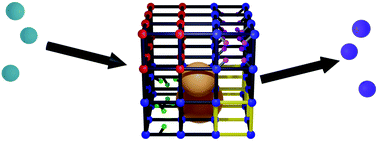MOF-enabled confinement and related effects for chemical catalyst presentation and utilization
Abstract
A defining characteristic of nearly all catalytically functional MOFs is uniform, molecular-scale porosity. MOF pores, linkers and nodes that define them, help regulate reactant and product transport, catalyst siting, catalyst accessibility, catalyst stability, catalyst activity, co-catalyst proximity, composition of the chemical environment at and beyond the catalytic active site, chemical intermediate and transition-state conformations, thermodynamic affinity of molecular guests for MOF interior sites, framework charge and density of charge-compensating ions, pore hydrophobicity/hydrophilicity, pore and channel rigidity vs. flexibility, and other features and properties. Collectively and individually, these properties help define overall catalyst functional behaviour. This review focuses on how porous, catalyst-containing MOFs capitalize on molecular-scale confinement, containment, isolation, environment modulation, energy delivery, and mobility to accomplish desired chemical transformations with potentially superior selectivity or other efficacy, especially in comparison to catalysts in homogeneous solution environments.

- This article is part of the themed collection: Nanoconfinement


 Please wait while we load your content...
Please wait while we load your content...
